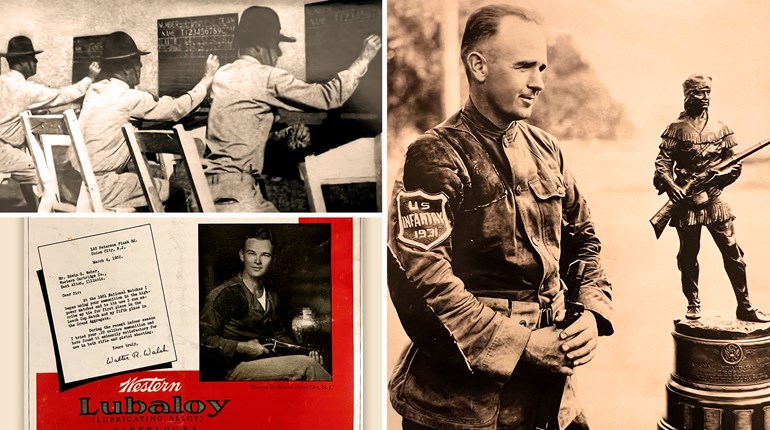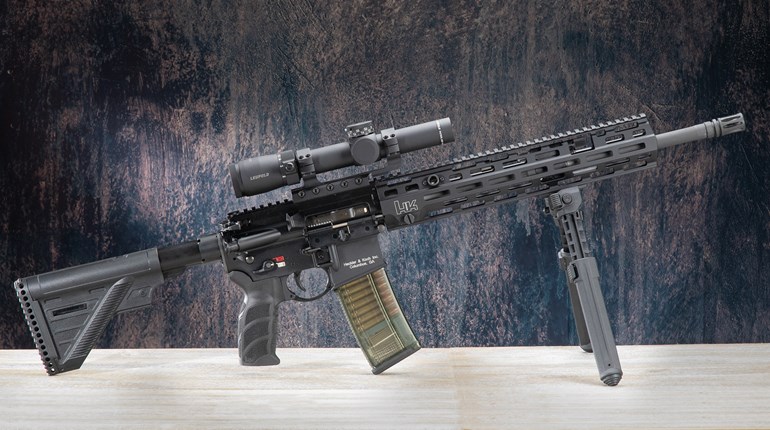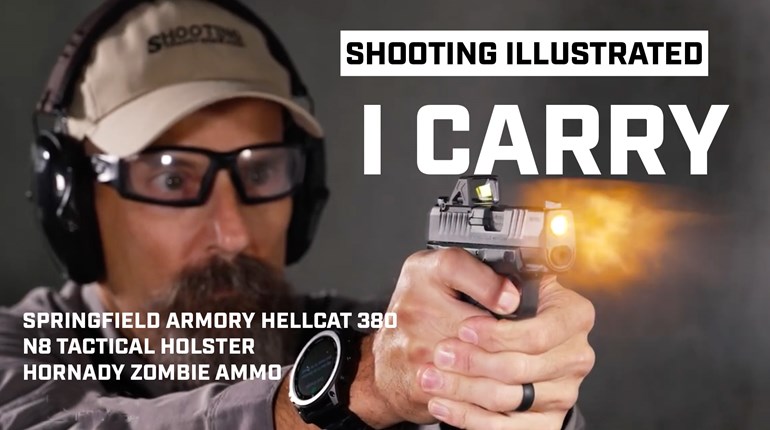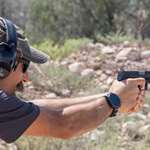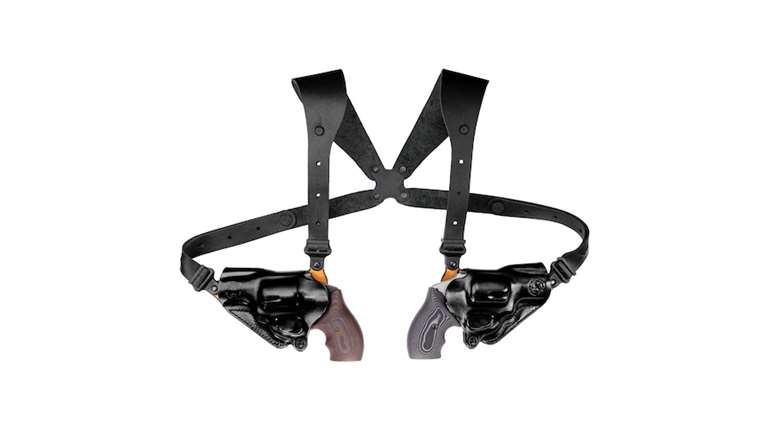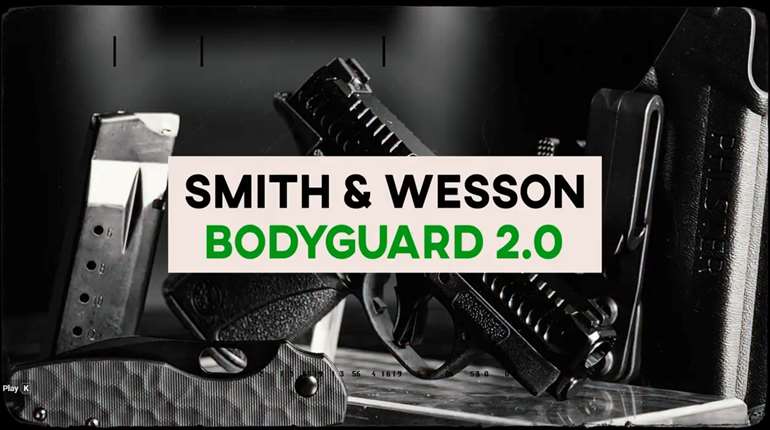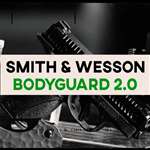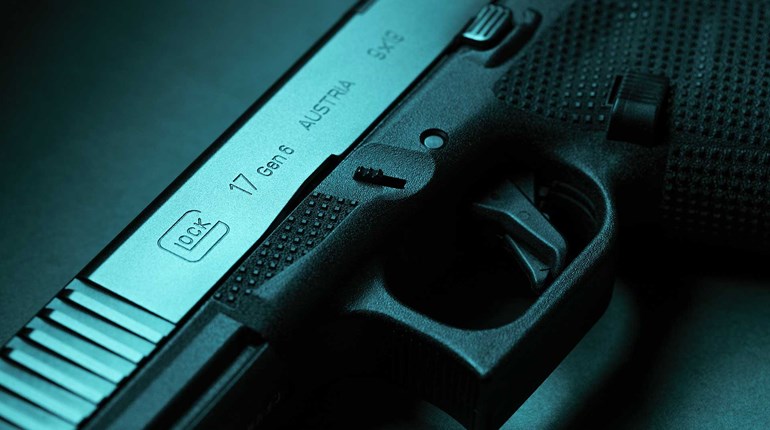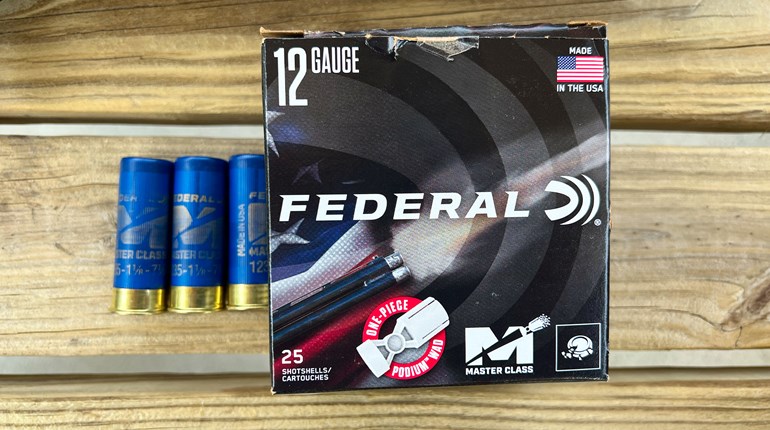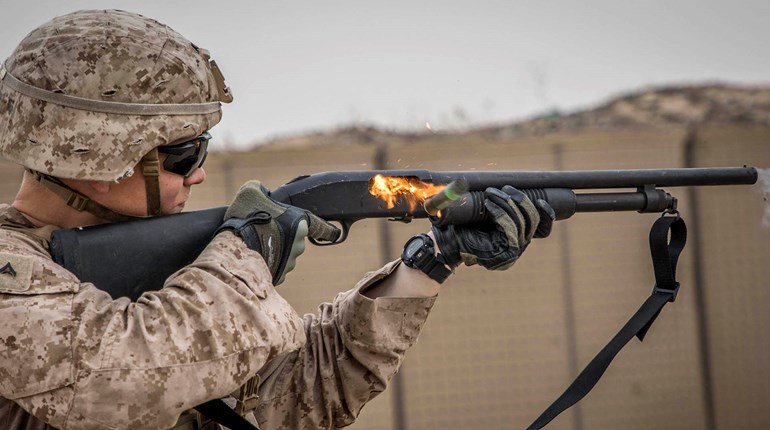In past episodes, you’ve seen us feature handguns equipped with red-dot sights, and it’s no secret that RDS-equipped options have emerged as popular pistols on the consumer market. Today, we’re going to examine the new Springfield Armory Hellcat. Actually, two Hellcats, since one is equipped with a red dot and one has traditional iron sights. This gives us a unique opportunity to examine the pros and cons of red-dot sights and iron sights on the same gun.
Springfield Armory Hellcat
Before we get into the nitty-gritty of the sight options on these two pistols, let’s look at the guns themselves. The Springfield Armory Hellcat really is an incredible little pistol, as it builds on the micro-compact precedent set by the SIG Sauer P365.
Both the Hellcat and the P365 are virtually the same size. By that, I mean that the Hellcat is one-fifth of an inch longer, three-tenths shorter and just a hair wider than the P365. However, the element that makes the Hellcat stand out is the addition of a single round more in capacity over the P365, meaning that this pistol holds 11 rounds inside of a flush-fit magazine! Considering that my Glock G19 holds only four more rounds in a substantially larger frame, that’s a pretty impressive feat of engineering.
The Springfield Armory Hellcat also features a standard Picatinny frame rail for lights and lasers, as well as wraparound slide serrations, a flat-faced trigger with a blade safety and a reversible magazine release. In addition to the 11-round, flush-fit magazine, the gun also ships with a 13-round extended magazine that adds only half an inch to the overall height of the gun.
Hellcat with Shield Sights RMSc
One of the models offered in the Springfield Armory Hellcat lineup is the OSP, which features a milled slot at the rear of the slide designed to accept red-dot optics. The milled slot sits low enough to allow shooters to co-witness the dot on their mounted optic with the iron sights on the gun.
So, what does a red-dot sight do for you? Why should you consider adding one to your personal-defense or concealed-carry gun? In short, it’s all about ease of aiming. With traditional iron sights, aiming takes place while tracking three points of reference: the front sight, the rear sight and the target. With a red-dot sight, the aiming dot sits in a single plane, thereby simplifying the aiming process by allowing the shooter to focus on two planes (dot and target) instead of three. No need to line the dot up with any other reference point. Simply place the dot over the target and fire. It doesn’t get much easier than that.
This is certainly a potential benefit in a high-stress situation where you might be rushed in aiming, and some contend that simplifying the sighting system leads to faster shots on target. However, all of this is a maybe. Just adding a red-dot sight to your gun is not some kind of magic aiming talisman. Practice is required to avoid some of the issues that can arise.
One of the most prevalent issues comes when shooters start searching for the dot inside the optical window. It takes a strong, consistent draw stroke to ensure that dot ends up inside the window at the right point, and it takes good recoil control to ensure that it drops back down inside the window after every shot.
True, too, is the fact that red-dot sights are complicated, battery-powered electronics that can fail. Though that’s often a popular criticism against them, the fact that so many optics are on the market with relatively few issues encountered is proof of how durable most quality red-dot sights are. Plus, with recent advances in electronics, battery life on most optics can now be measured in years. However, they will run out eventually.
One of the final potential issues with reflex-style sights like this Shield RMSc is the open space between the window and the emitter. EDC guns can get dusty, and when your RDS-equipped gun is sitting inside a holster, that window becomes a nice little tray for dirt, dust, lint and more. As long as you keep your equipment clean, it won’t be an issue, but it’s something to keep in mind. That also makes enclosed optics like the Aimpoint ACRO potentially more attractive, but the Hellcat doesn’t support that optic yet. Right now, only the Shield RMSc and the JPoint red-dot sights are supported.
Springfield Hellcat with Iron Sights
Well, with all the potential issues encountered with red-dot sights, this iron-sighted model sure seems appealing, doesn’t it? Not so fast. I’ll admit that there’s something alluring about sticking to analog basics, but there are definitely drawbacks with irons, and they’re actually magnified on the Hellcat. See, with a red-dot sight, that dot is in a single plane, which completely negates the concept of a sight radius.
Before we get too deep into this, let’s talk about what we mean. Sight radius is the distance between the front and rear sight. The length of the sight radius ultimately determines how precisely we can aim our firearms. The shorter the sight radius, the harder it is to detect small changes in our point of aim. These slight shifts at the gun are magnified at distance. That’s one of the reasons why smaller guns are typically harder to shoot accurately at longer ranges.
With a red dot, this factor doesn’t matter. Hold the dot over the target and fire. With the exception of bullet drop at extended ranges, your round will hit wherever the dot was when the gun fired. With iron sights, it might seem like you have a pretty good sight picture, but if it’s just slightly off to the left or right, that round might not go where you want it to go. At shorter distances, this isn’t as much of a problem, but what if you’re forced to make a longer shot? Can you trust your irons then?
Now, you might say, “Well, at least my irons won’t run out of juice!” There’s a yes and a no to that, actually. More of today’s iron sights are outfitted with tritium lamps for low-light illumination, and tritium has a pretty short half-life. Your lamps will be half as bright after 10 years as they were when they were made, at which point you might need to searchfor a new set of tritium-illuminated sights. Of course, the counter to that is that you can still use your irons after the tritium has dimmed, but your aiming system will certainly suffer in low light.
Whether you choose to go with today’s cutting-edge, RDS-equipped guns or stick with the iron-sighted slides of yesteryear, the bottom line is that there’s no magic sighting system. Each has pros and cons, and each requires training. Stay tuned to future episodes of “I Carry” for more information on today’s EDC gear and techniques.
I Carry Spotlight: Red Dot vs. Iron Sights
Support NRA Shooting Illustrated
DONATE
** When you buy products through the links on our site, we may earn a commission that supports NRA's mission to protect, preserve and defend the Second Amendment. **
